High-Speed Hybrid Photodetector (HS-HPD)
What is the High-Speed Hybrid Photodetector?
The high-speed hybrid photodetector (HS-HPD) combines the advantages of a photomultiplier tube (wavelength-independent temporal response, wide spectral coverage) and a solid-state avalanche photodiode (high quantum efficiency, no afterpulsing) into the ideal photodetector for photoluminescence lifetime measurements. The HS-HPD is the detector of choice for short-lifetime measurements on the FLS1000 Photoluminescence Spectrometer and fluorescence lifetime imaging (FLIM) on the RMS1000 Confocal Microscope.
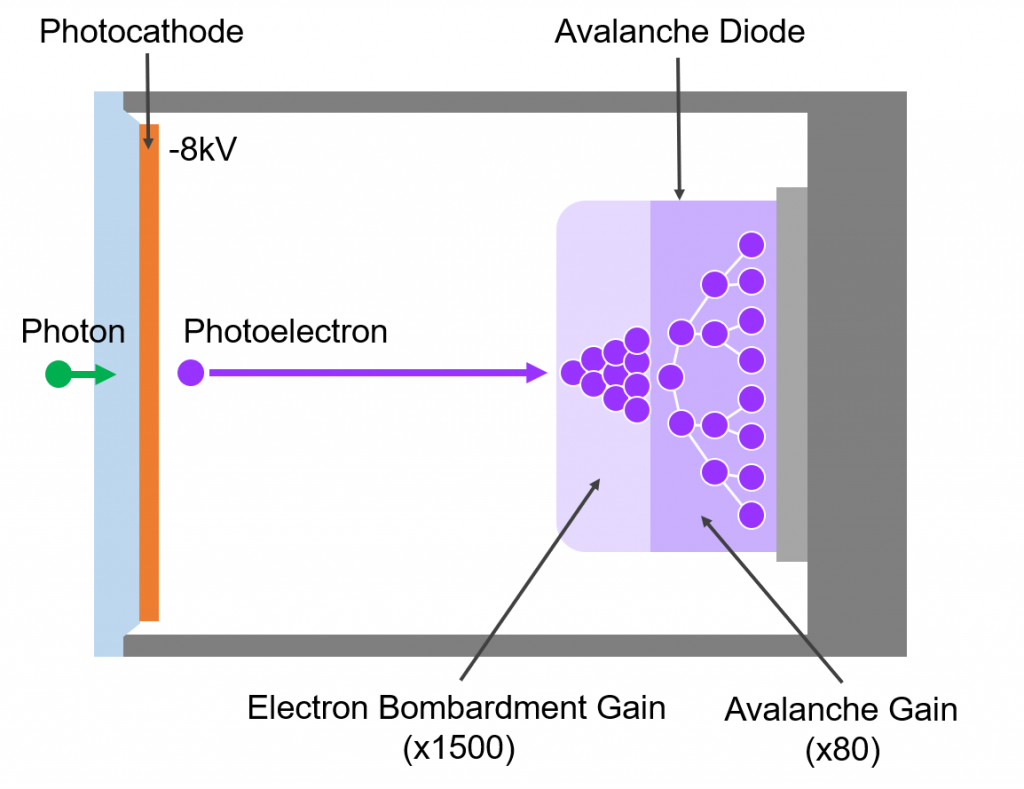
Figure 1: Operating Principle of the HS-HPD. The first stage operates like a photomultiplier tube where photons are converted to photoelectrons by the photocathode and the photoelectrons are accelerated by a voltage difference. In the second stage, the photoelectrons strike the avalanche diode where they are multiplied in a two-step gain process to create the electrical pulse for photon counting.
Picosecond Lifetime Measurements
The HS-HPD is the optimum detector for studying fast photoluminescence lifetimes and can resolve lifetimes down to 5 ps when paired with an appropriate laser source. To demonstrate the capability of the HS‑HPD, the fluorescence decay of 4-DASPI was measured in ethanol and water (Figure 2). Using reconvolution fitting with the instrument response function (IRF) in the Edinburgh Instruments FAST advanced lifetime analysis software, lifetimes of 57 ps in ethanol and 11 ps in water were obtained.
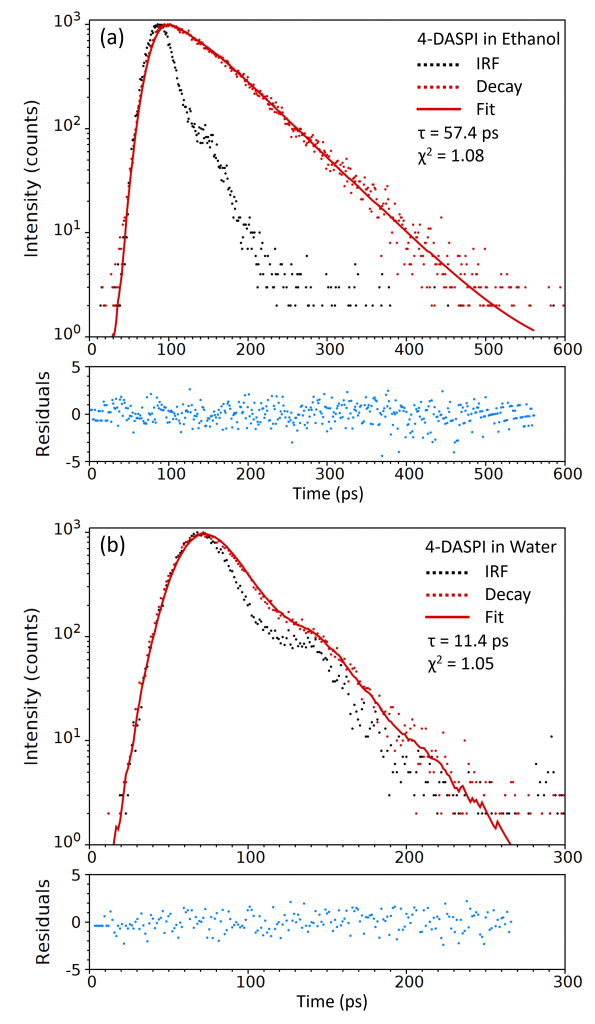
Figure 2: Fluorescence decay of 4-DASPI in ethanol (A) and water (B) measured using the FLS1000 with the HS‑HPD‑870 detector and a femtosecond laser with a pulse width of 150 fs.
HS-HPD Specifications
The HS-HPD detector is available in a range of models that are optimised for different applications. The standard model is the HS-HPD-870 which has the broadest wavelength coverage and the fastest temporal response (lowest TTS in Table 1), making it the best choice for most applications. The HS‑HPD‑860 and -910 have the highest QE in the NIR and are recommended if measuring weak emission in the NIR, while the HS-HPD-670 has the highest QE in the UV-Blue region. The HS-HPD-760 has the highest QE in the visible and is recommended for high throughput applications such as FLIM.
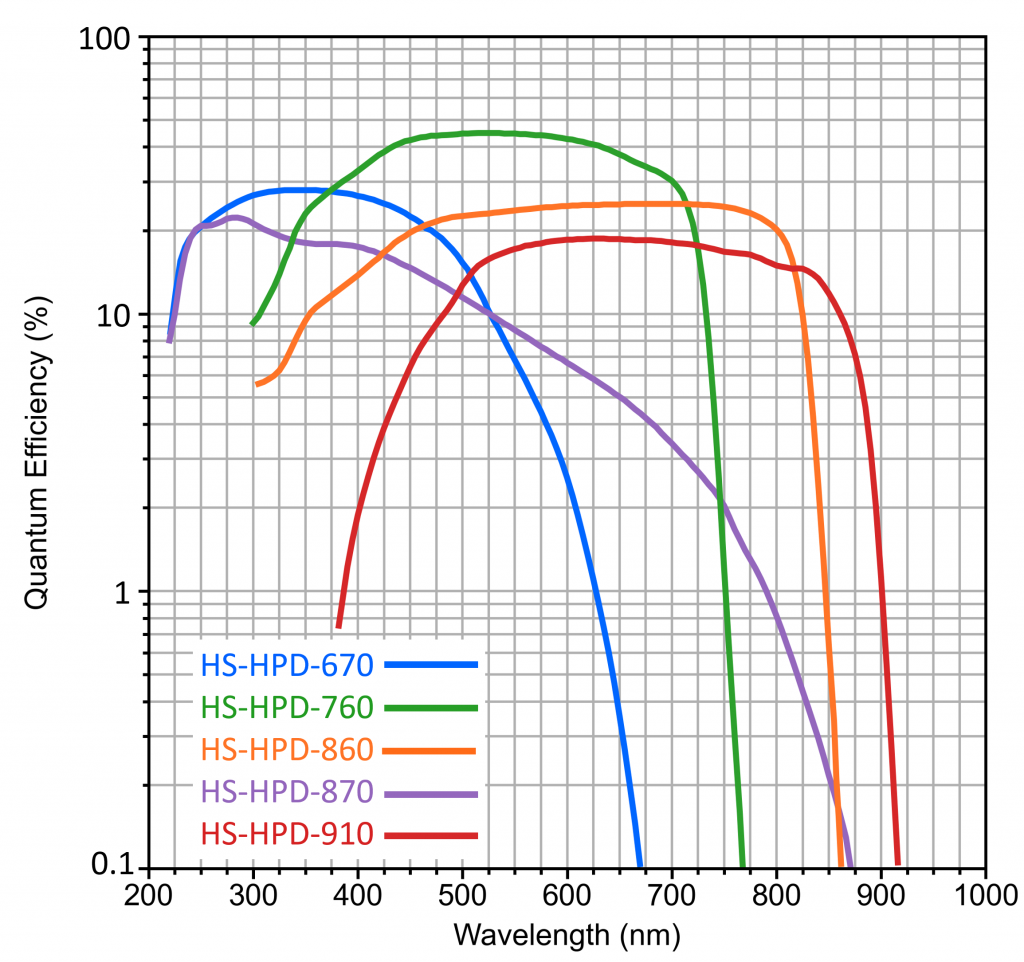
Figure 3: Quantum efficiency curves the HS-HPD models.
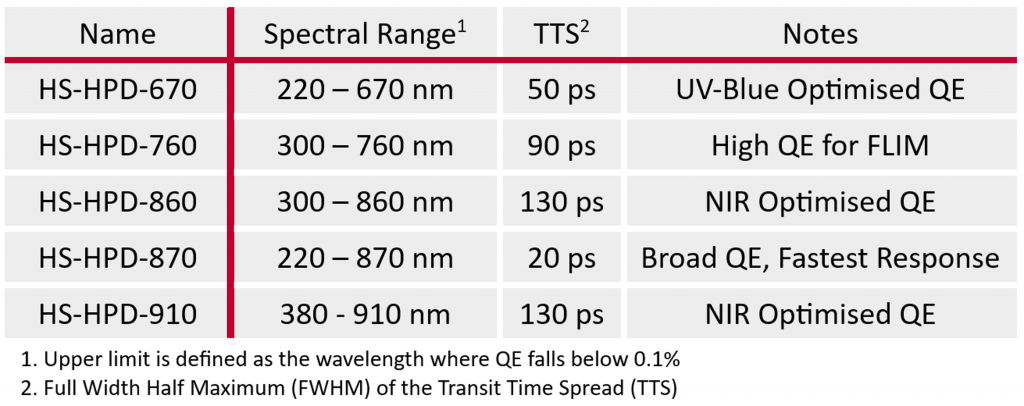 Table 1: Specifications of the HS-HPD models.
Table 1: Specifications of the HS-HPD models.
HS-HPD vs MCP-PMT
The historical detector of choice for short-lifetime TCSPC measurements is the microchannel plate PMT (MCP-PMT). The HS‑HPD (FWHM = 28 ps) has a slightly narrower IRF than the MCP-PMT (FWHM = 33 ps) when measured with a femtosecond laser (Figure 4a), and both detectors can in principle resolve lifetimes down to 5 ps. The HS-HPD has a cleaner IRF than the MCP-PMT (Figure 4b), with the MCP‑PMT IRF containing a pronounced afterpulse (circled in red) that can make it difficult to reconvolution fit short lifetimes; while the afterpulse is negligible in the HS-HPD. Furthermore, the HS‑HPD is a more robust detector capable of being exposed to >1×107 photons/s while the MCP-PMT is comparatively fragile with a maximum exposure rate of 1×105 photon/s. Due to these advantages, the HS-HPD is now the detector of choice for short fluorescence lifetime measurements on the FLS1000 and RMS1000.
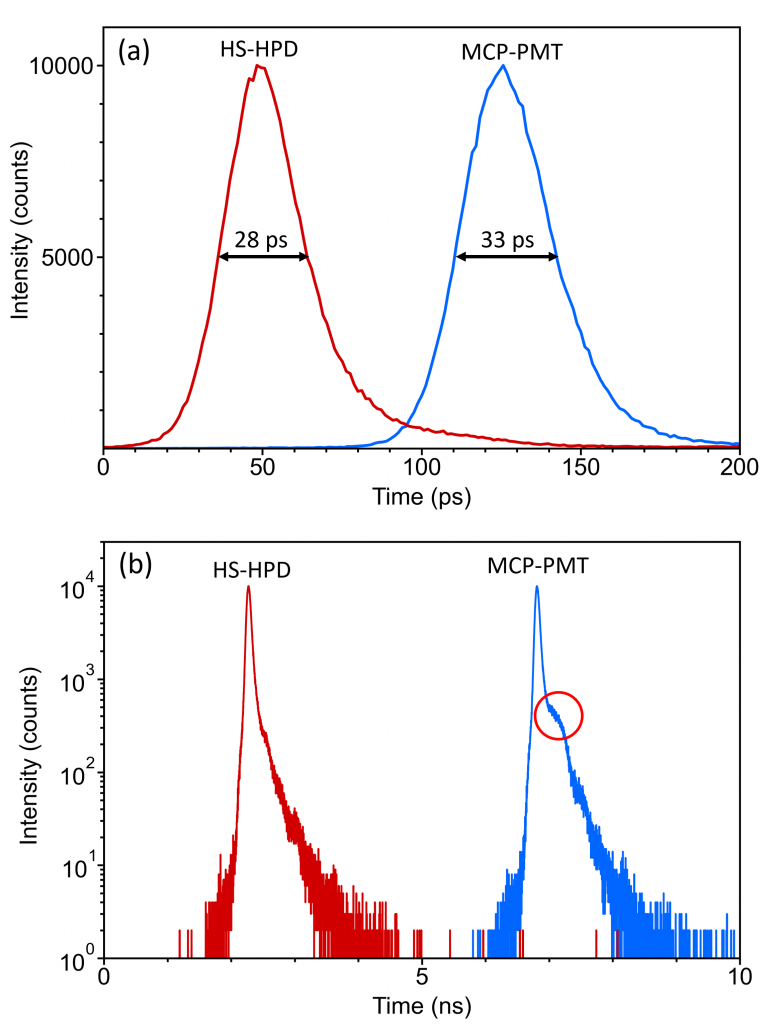
Figure 4: Comparison of the IRF of the HS-HPD-870 and MCP-PMT. (a) IRF measured with a femtosecond laser (150 fs) and shown on a linear y-scale. (b) IRF measured with an EPL-375 (70 ps) and shown on a logarithmic y‑scale. The afterpulse of the MCP is circled in red.
Conclusion
The HS-HPD is the ideal detector for short-lifetime measurements on the FLS1000 Photoluminescence Spectrometer and RMS1000 Confocal Microscope thanks to its narrow IRF and negligible afterpulse. The HS-HPD is available in a range of models with different wavelength coverage and response times to best suit different applications.









